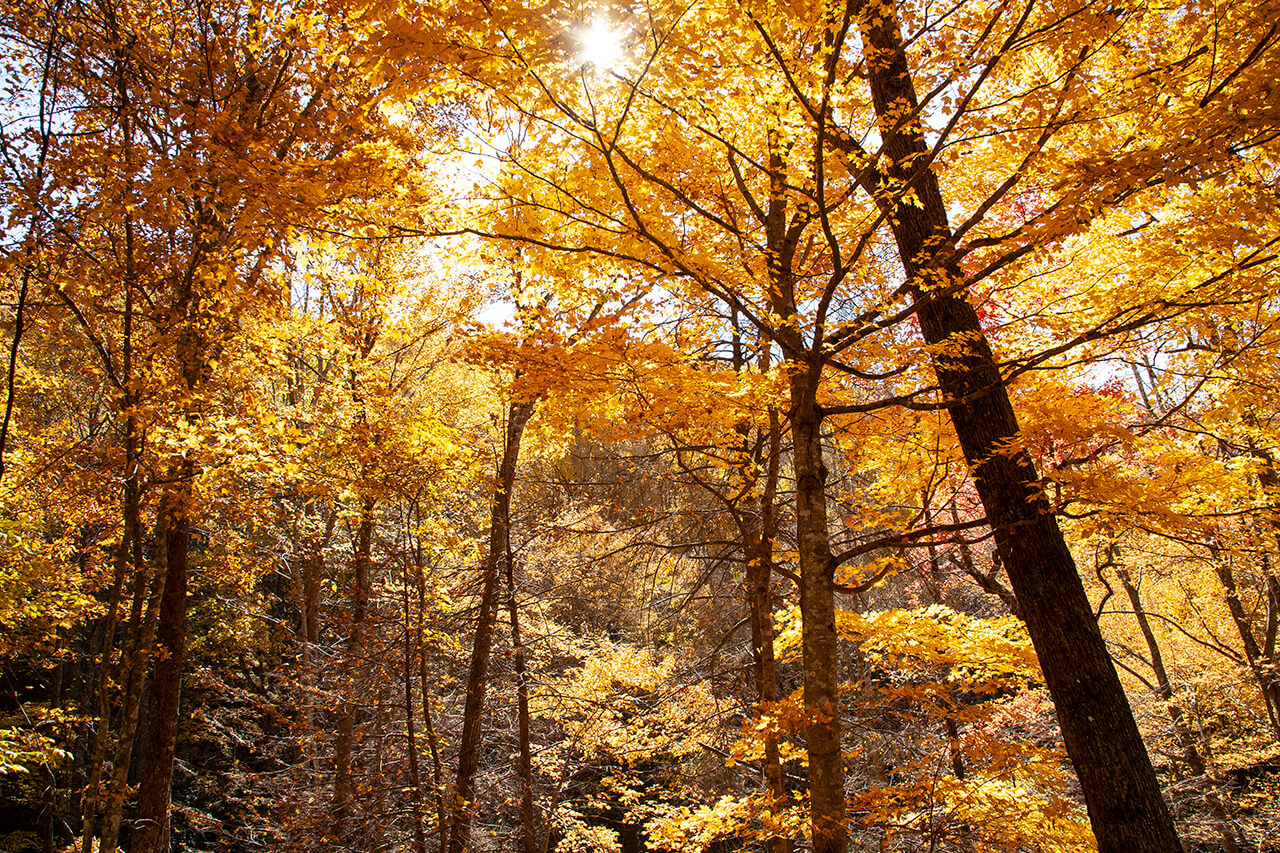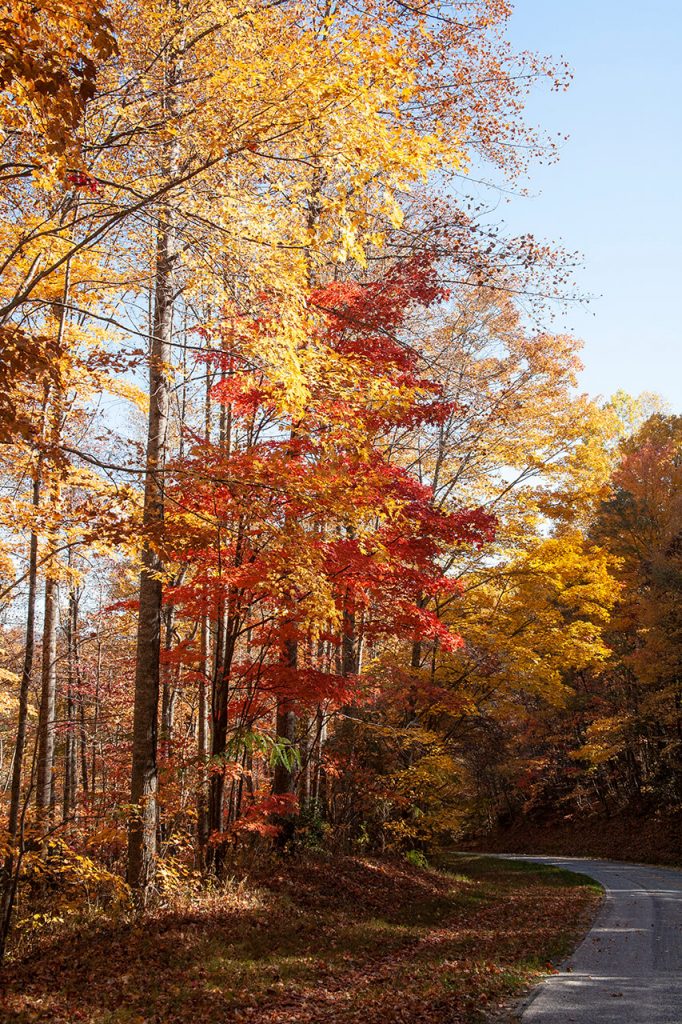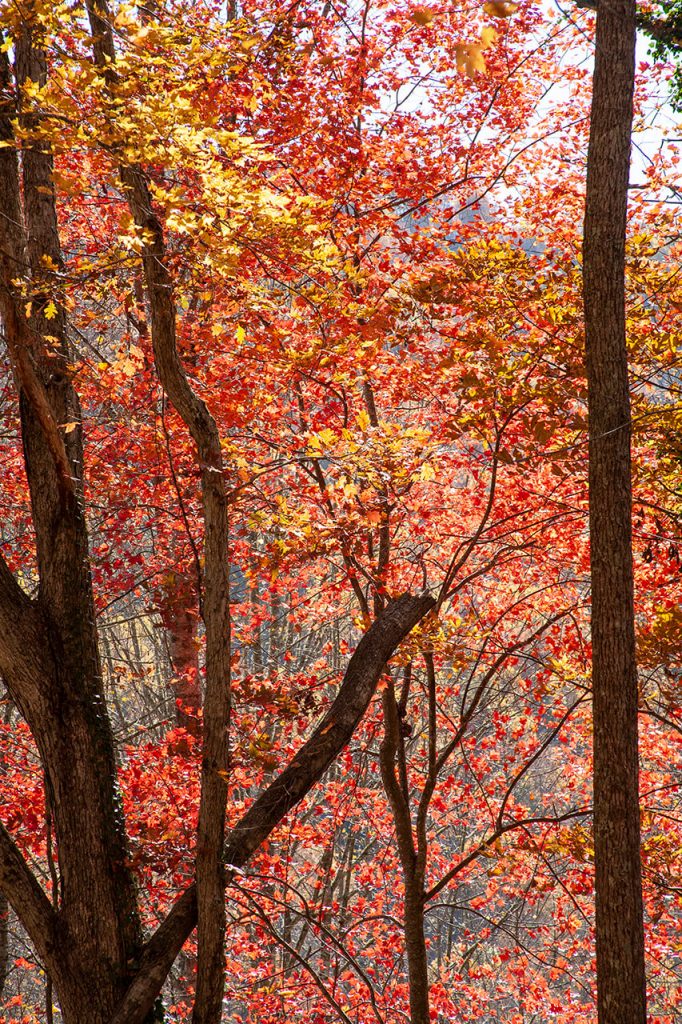WHERE WNC BEGINS
First Day of Fall 2020

We may not have been setting temperature records lately but the cool days and cooler evenings offer a promise of something pleasant and hopeful to look forward to. What is that? First, let’s drop some hints.
It’s always a mystery. Sometimes we are delighted with surprise endings, and sometimes we’re let down with a lackluster showing. Seating depends on where in the country you are - but all seats are free. Any guesses? It’s nature’s Fine Art Gallery and Picture Show. It’s the Fall Season.
Fall threw its hat into the 2020 lineup of seasonal events today. At 9:30 a.m. EDT, the day to night terminator (also called The Twilight Zone) draws a near-perfect vertical from the North to South pole as the sun is positioned directly over the equator. Like the first day of spring, on this first day of Fall we get treated to equal parts day and night. Enough of the introduction. On with the show.
In this article we’ll talk about three important actors, the role each plays, and why you can’t always tell the ending by how the story unfolds. (See the sidebar link for the anticipated peak leaf schedule provided by exploreasheville.com)
The Actors
Think of each actor as a painter playing a role in seasonal leaf color changes. Their names: Chlorophyll, Xanthophyll, Carotene and Anthocyanin. This is no Shakespearean play. Don’t stress yourself with memorizing the names. There’s no test at the end of this article. Make it easy on yourself and make up nicknames. I’m going with C-Phil, X-Phil, Carrot Top, and Anthony.
Enter C-Phil (The Greens)
For much of the year, we get entertained by the works of C-Phil (Chlorophyll). C-Phil is the pigment that converts light and water to sugars that feed its host - the tree. As you may recall from elementary school, C-Phil’s palette is predominantly green. But there are other pigments - like lesser actors waiting off-stage to be called for their parts. During Fall, these bit players take center stage. Many of us wait all year for them. These actors swell the audience in our area with leafers, leaf peepers, or leaf-lookers. Folks who travel from around the country to see the beautiful Smokies during peak leaf season.
As the days get shorter, C-Phil slowly sheds his cloak and begins his slow march off stage. The pigments Xanthophyll and Carotene take the center.
Enter X-Phil and Carrot Top (The Oranges and Yellows)
If you wait eagerly for the pumpkin orange and squash yellow hues to paint the mountainside, then you’re waiting for X-Phil and Carrot Top to take the stage. These pigments (Xanthophyll and Carotene) share the stage with C-Phil as supporting cast members. They don’t photosynthesize like chlorophyll, but they transfer the energy from the light they absorb to C-Phil. Think of them like off-stage actors feeding C-Phil his lines.
With the days getting shorter, photosynthesis production slows down and like bears, trees start preparing for hibernation. Behind the curtain, the tree, like the bear, conserves what energy it has. Chlorophyll production slows to a halt.
At this point, conditions permitting, the other leaf pigments, Xanthophyll and Carotene reflect orange and yellow hues for our enjoyment.
Enter Anthony … Maybe. (The Reds)
The plot may thicken, or fall apart at this point as we wait for one of the most dramatic actors (colors) to emerge: Anthocyanins, or, the Reds.
Reds are produced from the pigment, Anthocyanins. Some leaves have them, some leaves don’t. And the extent to which they enter the scene, and how long they bother to stick around depends on variables in weather.
It's been said that trees try to squeeze as much sugar as possible from its little suppliers, the leaves, and Anthocyanins are their heroes. They absorb some damaging light energy that can be harmful to the tree. This absorption process produces the last morsels of nutrients for the tree. And at the same time those pigments are able to reflect those intense fire reds that bring the audience to its feet.
What will this season bring? Warm dry days, cool nights, a blast of cold in the evenings during the last days of September? You know the disclaimers - mileage varies. While time and elevation are constants, weather conditions are not. We’ll have to see.
Photos and Story by Ronda Birtha
Sources
https://science.howstuffworks.com/life/botany/leaves-turn-red1.htm
https://www.exploreasheville.com/trip-ideas/seasonal-fun/fall/interactive-fall-color-map/
Leaf Peeper Schedule - Fall 2020
Want to know what to anticipate for Fall Foliage in Western North Carolina? Check out this itinerary provided by exploreasheville.com.
The official start of Fall - the Fall/Autumnal Equinox - is THIS MORNING, at 9:30 AM EDT. This marks the time when the day-to-night line, called the terminator, is perfectly vertical from pole to pole and the sun is directly over the equator. #FallEquinox #FirstDayOfFall pic.twitter.com/kkSH3HM0RN
— National Weather Service (@NWS) September 22, 2020


